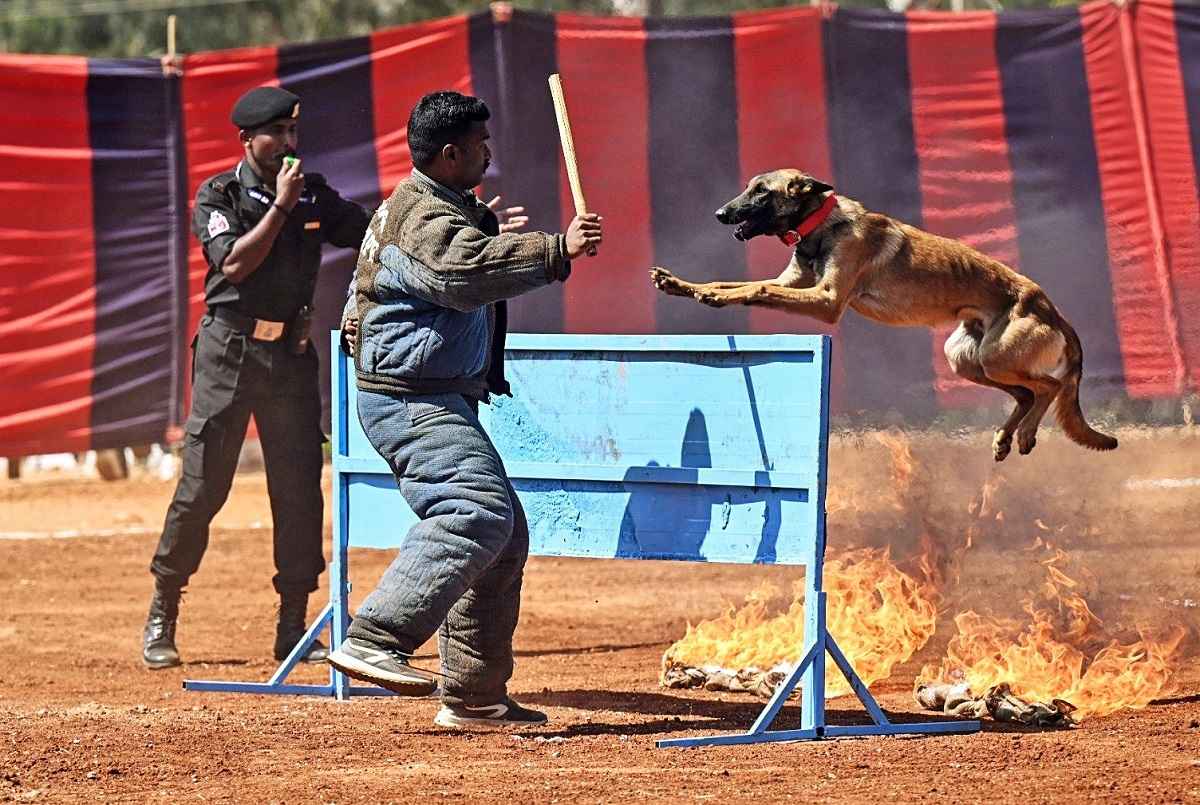How BSF Trains Its Dogs to Sniff Bombs, Track Intruders & Save Lives
[Featured image courtesy Saksham Jain (YouTube)]
When duty calls, these warriors don’t hesitate. They don’t ask why. They simply run straight into danger.
Inside India’s elite Border Security Force (BSF), there exists a silent, steadfast, and remarkably brave unit. One that doesn’t wear a uniform, but serves with every beat of its heart. These are the canines of the BSF’s K9 Unit — trained dogs who walk alongside soldiers, often taking the first step into the unknown.
From training grounds to frontlines
Training begins when the dogs are young — energetic, alert, and full of potential. The first few weeks focus on building trust between each dog and its handler. This bond isn’t just for obedience; it’s for life. A BSF dog is never alone — it is paired with one handler who becomes its partner across every mission. Once that connection is forged, the real training begins.
 When they retire, these dogs don’t fade into the background. They’re either adopted into loving homes or continue living with their handlers — their years of service honoured with comfort and dignity. Picture source: The Daily Guardian
When they retire, these dogs don’t fade into the background. They’re either adopted into loving homes or continue living with their handlers — their years of service honoured with comfort and dignity. Picture source: The Daily Guardian
Over 36 weeks — nearly 10 months — these dogs are put through intense, combat-like scenarios. They’re trained to stay calm amid loud gunfire, ignore distractions, and respond only to their handler’s voice or gestures. This discipline is vital during border patrols or anti-terror operations, where silence and precision can save lives.
One striking clip from the training reel shows a dog walking unfazed beside its handler while gunshots echo in the background. It doesn’t flinch. That’s the kind of composure built over months of trust and training.
Not every dog takes on the same task. Based on their instincts and abilities, they’re trained for specific roles:
- Explosive detection dogs can sniff out bombs — even those buried underground.
- Tracker dogs follow scent trails to locate intruders or missing persons.
- Guard dogs protect sensitive areas and alert handlers to movement or threats.
- Search and rescue dogs locate people trapped in collapsed buildings or remote terrain — especially critical during natural disasters.
- Some are even trained to carry medical kits during emergencies, running through active zones without hesitation.
Serving in silence, honoured in retirement
In high-risk zones, noise can cost lives. That’s why BSF handlers use silent cues — subtle hand signals or body movements — to guide their dogs. The dogs learn to interpret these effortlessly. In one part of the video, a handler gives a near-invisible signal. The dog immediately shifts direction — smooth, quiet, and precise. It’s a partnership built on instinct and deep understanding.
What stands out most? These dogs aren’t treated like machines. They’re respected, loved, and celebrated. Trainers are seen feeding them by hand, patting them affectionately, and playing with them during breaks. It’s clear that behind the discipline lies deep care.
When they retire, these dogs don’t fade into the background. They’re either adopted into loving homes or continue living with their handlers — their years of service honoured with comfort and dignity.
These dogs may not speak, but they understand more than most. In silence, they serve. In action, they protect. And behind every mission is a wagging tail, a loyal heart, and a courage few can match.
Edited by Khushi Arora
News